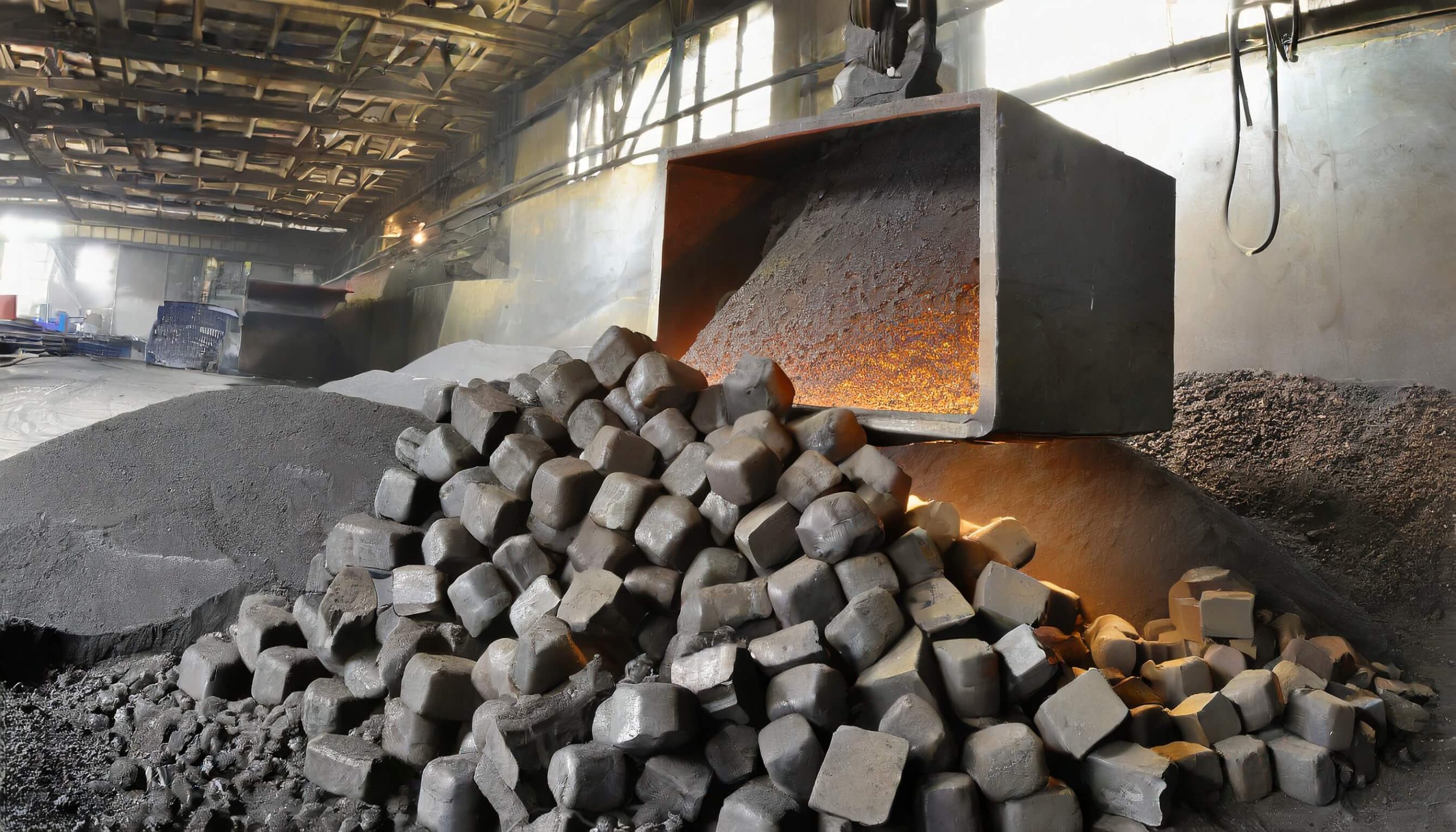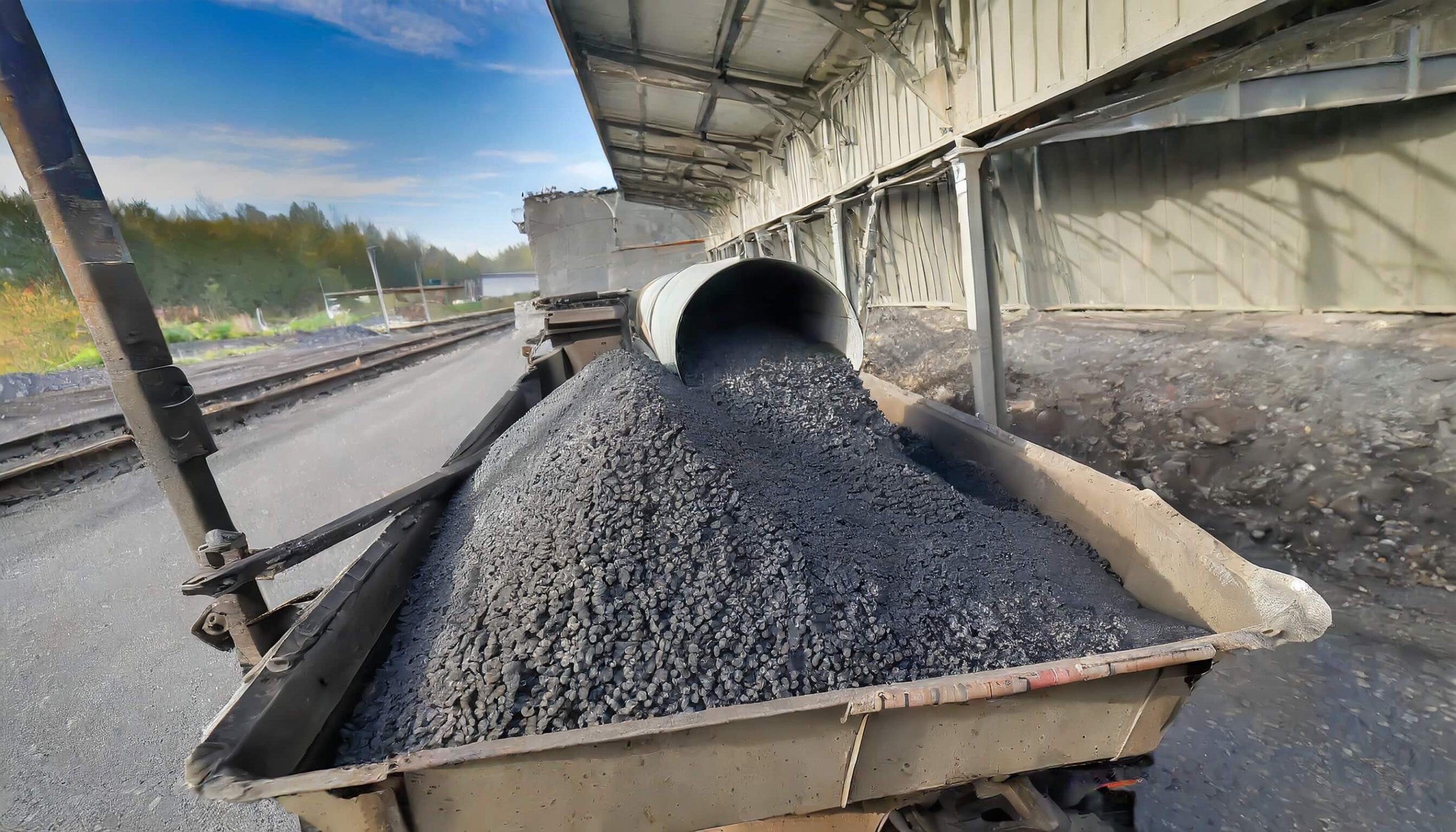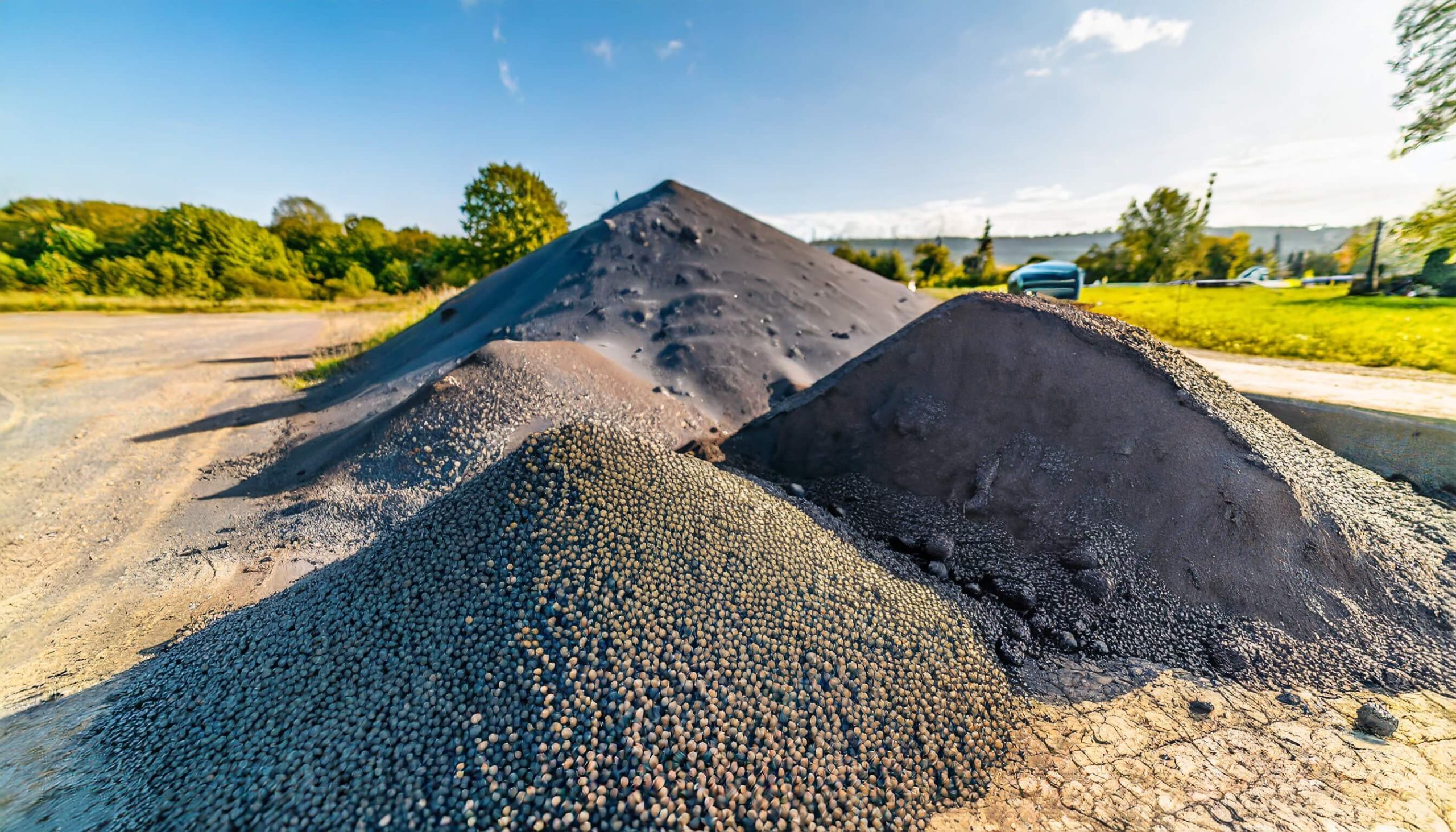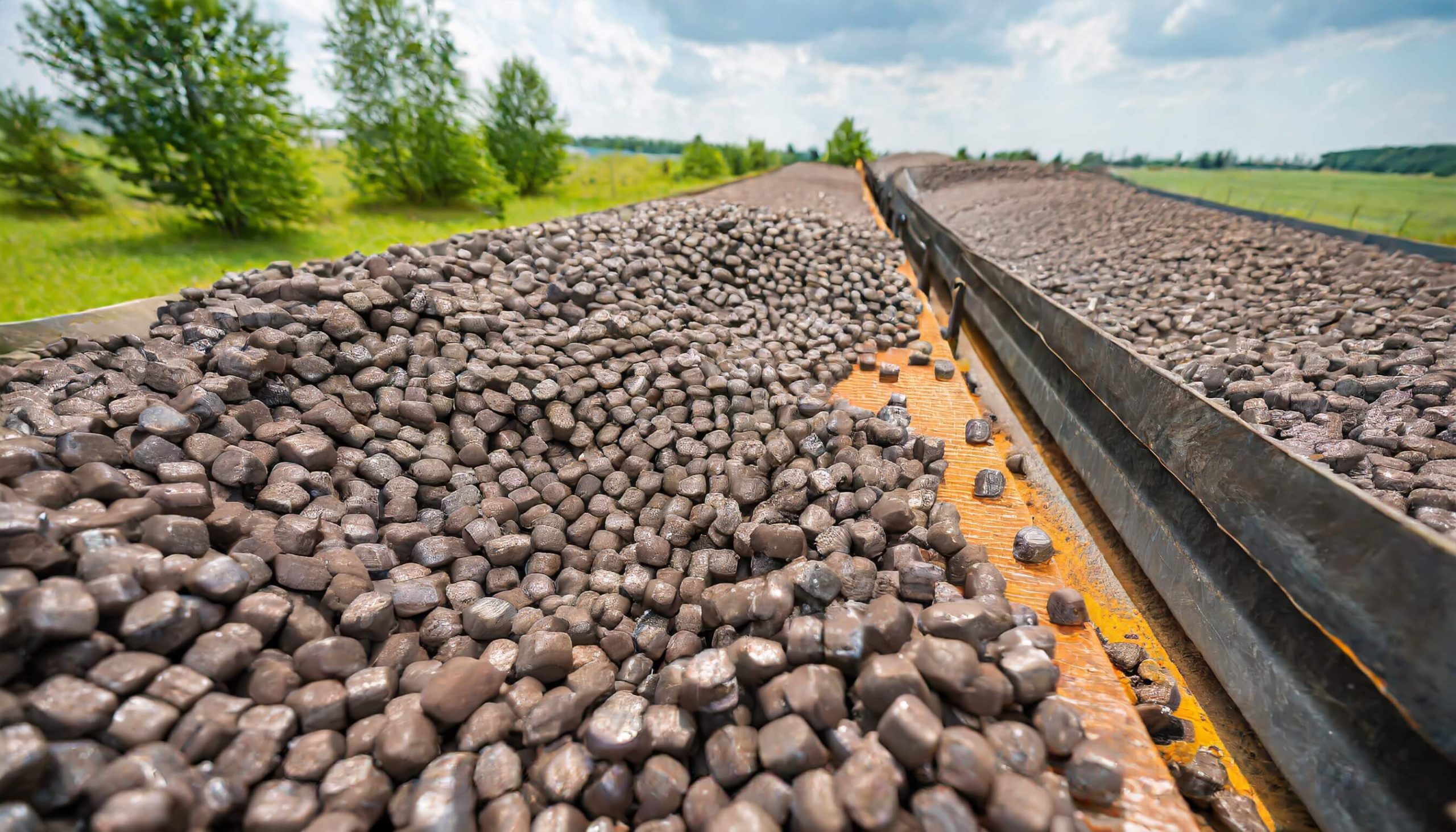Unleashing the Potential of Direct Reduced Iron
Iron production has been a vital part of human history, but the traditional methods used for the process have their drawbacks. One of the alternatives that have received attention in recent years is Direct Reduced Iron (DRI).
DRI is produced through a process that uses natural gas or coal to reduce iron ore to its metallic form. In this blog post, we will provide you with an overview of the direct reduction process and its significance in iron production.
We will also discuss the quality of iron ore and how it affects the direct reduction process. Furthermore, we will explore high-temperature metallurgical processes involved in direct iron production and resources required for it. Lastly, we will delve into chemical changes during direct reduction and discuss how carbon dioxide utilization can shape the future of iron production. Join us on this journey as we unleash the potential of Direct Reduced Iron.
Table of Content
- 1 Understanding Direct Reduction Process in Iron Production
- 2 Quality of Iron Ore and Its Importance in Direct Reduction
- 3 High-Temperature Metallurgical Processes in Direct Iron Production
- 4 Direct Iron Production and Resources
- 5 Chemical Changes During the Direct Reduction of Iron
- 6 The Future of Direct Iron Production
- 7 How Will Direct Reduced Iron Shape the Future of Iron Production?
- 8 Frequently Asked Questions
- 8.1 What is direct reduced iron and how is it different from traditional iron production methods?
- 8.2 What are some advantages of using direct reduced iron in manufacturing?
- 8.3 What industries typically use direct reduced iron as a raw material?
- 8.4 What are some environmental benefits of using direct reduced iron?
- 9 Conclusion
Understanding Direct Reduction Process in Iron Production
The production of high-quality metallic iron is achieved through the direct reduction process, which utilizes reducing gas to eliminate oxygen from iron ore. This alternative ironmaking process operates at lower temperatures than the blast furnace process and involves shaft furnace, rotary kiln, and fluidized bed reactors.
The direct reduction process plays a critical role in world DRI production and has significant applications in electric arc furnaces (EAF), with countries like India leading in DRI production. Additionally, the process involves the integration of heat generators and a mixture of natural gas, contributing to its significance in the steel industry by separating metallic iron from the slag.

A Peek into the History of Direct Reduction
Since the early 1900s, the direct reduction process has been in use, with the first plant being established in the United States. Over time, advancements have rendered the technology more energy-efficient, reducing its environmental footprint.
Initially, shaft furnace technology was employed in the early direct reduction plants. This historical evolution has paved the way for a more sustainable and efficient process, aligning with the industry’s increasingly eco-conscious approach.
The Science Behind the Process
The reduction process in direct reduction involves the generation of carbon monoxide as the reducing agent, which is then utilized to reduce iron oxide to metallic iron. This reduction reaction requires high temperatures for the conversion to occur, ultimately producing metallic iron from iron ore.
The process relies on the use of natural gas or syngas as the reducing agents, highlighting the significance of these inputs in the overall direct reduction process. This method of iron production offers a more energy-efficient alternative to traditional blast furnace processes and plays a crucial role in the world DRI production, with implications for the global iron industry.
Quality of Iron Ore and Its Importance in Direct Reduction
The efficiency of direct reduction is heavily impacted by the quality of iron ore. Lower iron content in the ore results in decreased metallic iron production, emphasizing the crucial consistency in ore quality. Direct reduction processes favor iron ore fines as feedstock due to their superior quality, with iron ore pellets being a popular choice for the same reason. Maintaining consistent and high-quality iron ore feed is essential for optimized direct reduction processes.

Role of Iron Ore Quality in Successful Direct Reduction
Ensuring successful direct reduction heavily relies on the quality of iron ore utilized. High-quality iron ore is essential for achieving high metallic iron production and should ideally have low impurities to facilitate effective reduction. Additionally, the surface area of the iron ore significantly impacts the reduction rate, making it a crucial factor in the process.
Iron ore with a high metallization degree is preferred for direct reduction due to its favorable properties. Moreover, the quality of iron ore directly influences the reduction zone of the furnace, further emphasizing its critical role in the overall success of the direct reduction process.
Implications of Poor Quality Iron Ore on the Process
The reduction reaction’s efficiency is hampered by poor-quality iron ore, leading to a decrease in metallization degree and a rise in reducing gas consumption. This, in turn, reduces the production of direct reduced iron (DRI). It is imperative to meticulously monitor the quality of iron ore to ensure a successful direct reduction process, as poor-quality iron ore adversely impacts the entire process.
High-Temperature Metallurgical Processes in Direct Iron Production
Carburizing reactions play a pivotal role in direct iron production, while high temperatures are essential for the reduction of iron oxide. These reduction reactions occur in the solid state at elevated temperatures, with additional high-temperature processes involving the formation of iron carbide.
Achieving precise temperature control is crucial in this high-temperature process, ensuring efficient production. The integration of an NLP terms such as “pilot plant,” “mixture of natural gas,” and “mt of DRI” enhances the understanding of the complex metallurgical processes involved in direct iron production.
Exploring Carburizing Reactions
Carburization involves the absorption of carbon by the metallic charge, which occurs in the reduction zone of the furnace. During this process, carbon diffuses into the metallic charge, enhancing the rate of metallic iron production.
The reducing furnace environment facilitates these carburization reactions, contributing to the overall efficiency of the process. Carburizing reactions play a crucial role in direct iron production, ensuring the quality and quantity of the produced iron.
Other Significant High-Temperature Reactions
At high temperatures, iron oxide undergoes a transformation to metallic iron through reduction. This intricate process involves the removal of oxygen from iron ore and takes place within the direct reduction reactor. The reduction of iron oxide results in the generation of carbon dioxide, while nitrogen and carbon monoxide serve as the primary off-gases.
These high-temperature reactions form a critical part of the direct reduction process, highlighting the complex chemical transformations that occur during the production of direct reduced iron. The integration of NLP terms such as “iron carbide,” “natural gas,” “carbon dioxide utilization,” and “RN” (referring to processes like SL/RN) further emphasizes the multifaceted nature of these high-temperature reactions.
Direct Iron Production and Resources
Direct iron production is pivotal for the steelmaking industry, offering environmental benefits and an alternative to the blast furnace route. Midrex Technologies, a leader in direct reduction technologies, utilizes natural gas, syngas, or hydrogen as reducing agents. This method, pioneered by Midrex Technologies, contributes to the exponential growth of world DRI production.
Utilizing approximately 108 million metric tons (MT) of DRI annually, it is a sustainable approach that minimizes the use of pig iron, scrap, and other raw materials. Additionally, pilot plants integrate heat generators and advanced technologies, furthering the advancements of direct iron production on a global scale at Bao steel Zhanjiang Iron & Steel Co.

The Natural Gas Factor in Direct Iron Production
In direct iron production, natural gas serves as the essential reducing agent, enabling the reaction with iron oxide to produce metallic iron. This high-temperature reduction process generates carbon monoxide, a crucial component in direct iron production. By facilitating the reduction of iron oxide, natural gas plays a significant role in the efficient and widely adopted method of direct iron production.
The use of natural gas in this process highlights its importance as an integrated heat generator, especially in regions like India, China, and Europe, where direct reduced iron (DRI) production is rapidly expanding, contributing significantly to the steelmaking industry.
Other Resources Involved in Direct Iron Production
In addition to natural gas, the direct iron production process incorporates iron ore pellets as the primary raw material. The reducing gas, predominantly natural gas, plays a critical role in driving the direct reduction process. Furthermore, electric arc furnaces utilize direct reduced iron (DRI) as the metallic charge, contributing significantly to the steelmaking process.
Notably, the production of direct reduced iron also integrates hydrogen production, thereby enhancing the overall reduction process. As a result, DRI, produced through direct reduction, exhibits lower nitrogen content compared to blast furnace iron.
Chemical Changes During the Direct Reduction of Iron
The transformation of iron oxide to metallic iron characterizes the direct reduction of iron. This solid-state reduction process takes place in the direct reduction reactor, operating at high temperatures to facilitate the conversion of iron ore fines into metallic iron.
The technology employed in direct reduction ensures a high metallization degree, culminating in the commercial-scale production of hot briquetted iron (HBI). This preferred method ensures efficiency and productivity, contributing significantly to world DRI production, particularly in regions like China, India, and Europe.
The chemical changes during this process have a direct impact on the quality of the produced iron, influencing its application in various industries, including electric arc furnaces (EAF) and blast furnaces (BF).
Understanding the Chemical Changes During Direct Reduction
The solid-state reduction process facilitates the metallization of iron oxide into metallic iron without melting the iron ore. Processes like MIDREX rely on reducing furnace temperatures, while rotary kiln technology offers short contact time for efficient reduction.
The reduction zone of the furnace enables the transformation of iron oxide into metallic iron, in shaft furnace or rotary hearth furnaces at direct reduction plants, enhancing the efficiency of the process.
Impact of these Chemical Changes on the Quality of the Produced Iron
The chemical alterations resulting from direct reduction technology lead to the generation of high-quality metallic iron with a substantial iron content. This process yields sponge iron, providing a premium metallic charge ideal for steelmaking due to its increased surface area.
The transformation of iron oxide through the reduction process results in the production of high-quality direct reduced iron suitable for various industrial applications, particularly in steel plants. Additionally, the reduction process significantly reduces the iron oxide, producing a metallic charge well-suited for utilization in steel plants and enhancing the overall quality of the produced iron.
The Future of Direct Iron Production
Direct iron production, utilizing carbon dioxide, is set to shape the future of steelmaking. With a focus on global sustainability goals, direct reduced iron (DRI) production at a commercial scale is expected to have a significant impact.
DRI, a preferred feedstock, not only offers environmental advantages and process efficiencies but also plays a pivotal role in future iron production. The utilization of carbon dioxide for direct iron production at a commercial scale stands as a testament to enhancing environmental sustainability, making it a crucial element in the evolution of steelmaking processes.
Role of Carbon Dioxide Utilization for Global Sustainability
Integrating carbon dioxide utilization in direct iron production aligns with global climate targets, fostering the sustainable production of direct reduced iron. This utilization enhances the reduction process’s sustainability, supporting global decarbonization efforts and contributing to environmental sustainability.
Direct iron production with carbon dioxide utilization not only meets climate goals but also ensures the production of high-quality direct reduced iron, thus playing a crucial role in the future of steelmaking.
How Will Direct Reduced Iron Shape the Future of Iron Production?
Direct reduced iron (DRI) is poised to revolutionize the future of iron production. With its efficient production process, DRI is set to reshape the industry and play a significant role in steelmaking. The widespread adoption of DRI, particularly through technologies like MIDREX, will lead the world in DRI production and shape the future of iron production.
Frequently Asked Questions
What is direct reduced iron and how is it different from traditional iron production methods?
Direct reduced iron (DRI) is a high-quality iron product produced by reducing iron ore in a solid-state process. Unlike traditional methods that use liquid iron, DRI offers advantages like lower carbon emissions and energy consumption. It can be used as a feedstock in electric arc furnaces for steel production.
What are some advantages of using direct reduced iron in manufacturing?
Direct reduced iron (DRI) offers several advantages in manufacturing. With higher purity compared to traditional iron, DRI is ideal for specific manufacturing processes. It also emits fewer greenhouse gases, making it more environmentally friendly. Additionally, DRI’s efficiency and lower energy requirements can result in cost savings.
Its versatility allows for use in various industries like automotive, construction, and aerospace, in powder, pellet, lump, or briquette form. The general specifications for DRI (ranges % by weight) based on 65.5 — 68% Fe Iron Ore * residual unreduced oxides, mainly SiO2 and Al2 O3, , but also CaO, MgO, MnO, etc.
What industries typically use direct reduced iron as a raw material?
Industries that commonly utilize direct reduced iron as a raw material include steel, cement, and chemical industries. It is also used in the production of wrought iron, cast iron, and ductile iron.
The use of direct reduced iron can result in lower greenhouse gas emissions and energy consumption compared to traditional iron-making processes.
What are some environmental benefits of using direct reduced iron?
Using direct reduced iron (DRI) in steel production offers several environmental benefits. DRI has a lower carbon footprint compared to traditional methods, thanks to its production using natural gas instead of coal.
This leads to reduced greenhouse gas emissions. Additionally, as the world leader in DRI production, DRI reduces the reliance on non-renewable resources like coke and coal, leading to energy savings and less air pollution.
Conclusion
In conclusion, direct reduced iron (DRI) is a promising technology that has the potential to reshape the future of iron production. The direct reduction process offers numerous advantages, including lower energy consumption and reduced carbon emissions. However, the quality of iron ore plays a crucial role in the success of the DRI process.
Using high-quality iron ore ensures optimal performance and prevents any negative impact on the final product. Additionally, understanding the chemical changes that occur during direct reduction and their impact on the quality of the produced iron is essential. Looking ahead, the utilization of carbon dioxide for global sustainability and the continued development of DRI technology will undoubtedly play a significant role in the future of iron production.

